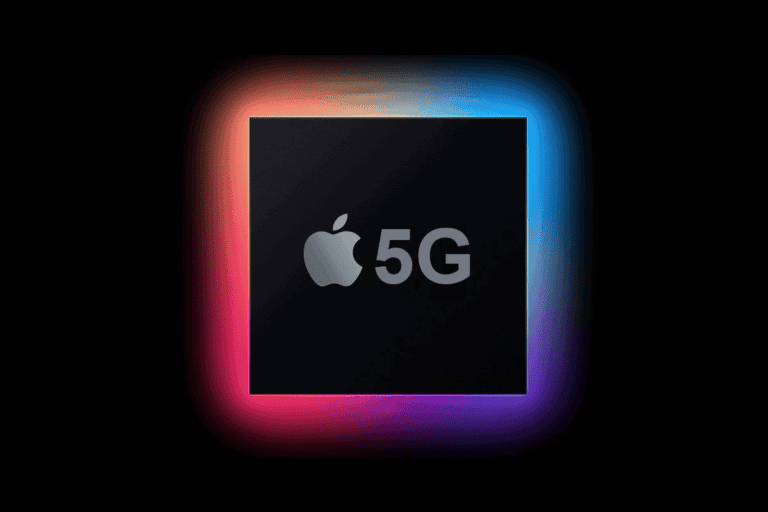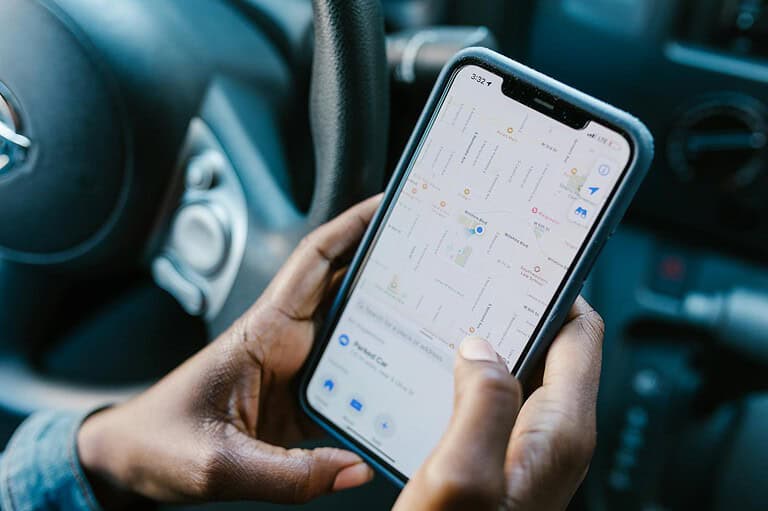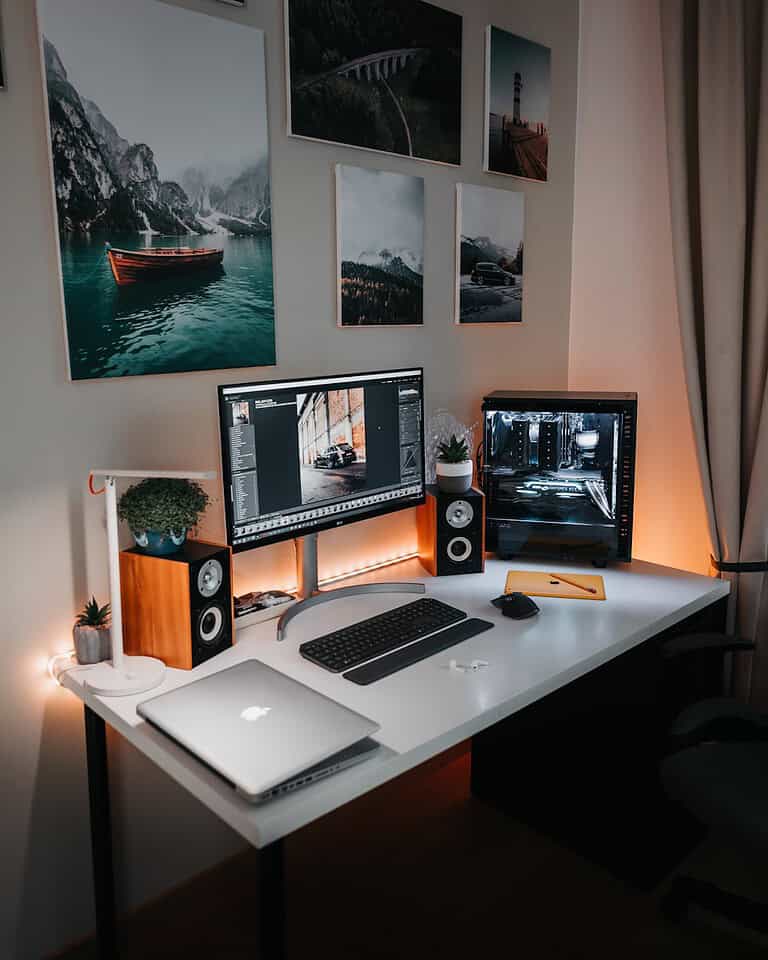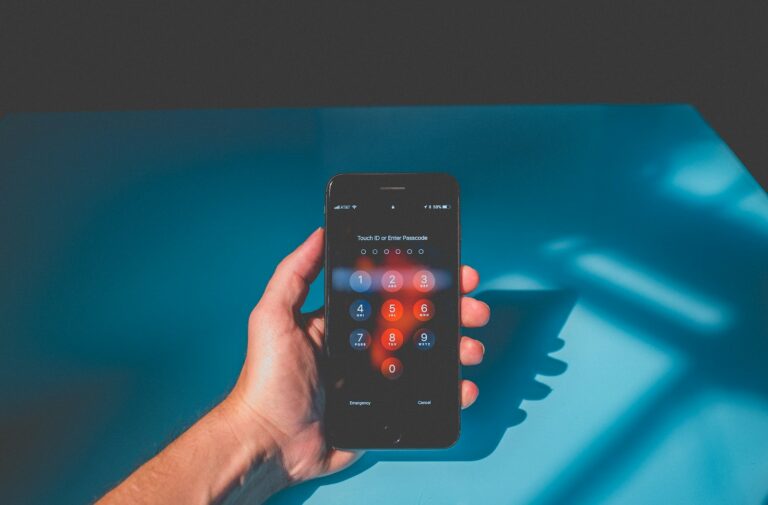
Renters insurance feels like a safety net for every gadget and appliance you drag into a new apartment—but that net has holes. Standard policies are designed to cover named perils such as fire or theft, not every mishap that can befall modern electronics. Below, you’ll find the most common blind spots that catch tenants off-guard—plus proactive steps to close them before disaster strikes.
1. Catastrophic Events Insurers Leave to Specialty Policies
- Floods and Surface Water – Whether it’s a burst levee or a rain-soaked basement, water that originates outside your unit is excluded. Separate flood insurance through the National Flood Insurance Program (NFIP) or a private carrier is the only remedy.
- Earthquakes and Earth Movement – Quakes, sinkholes, landslides, even man-made tremors from construction typically require a dedicated earthquake endorsement or standalone policy.
- Government & Utility Failures – Power outages that fry a refrigerator’s compressor or a city water main break that shorts a laptop are rarely covered; they fall under “utility service interruption,” which most insurers explicitly omit.
2. Inside-the-Wall Perils Most People Forget
- Gradual Damage & Wear – A fan motor that dies, a laptop battery that swells, or an aging refrigerator seal that lets in warm air are considered “maintenance” issues—insurance pays only for sudden, accidental loss.
- Mechanical or Electrical Breakdown – If an internal surge, short circuit, or gear failure bricks your PS5, it’s on you unless you buy an equipment breakdown rider (sometimes $25–$50 per year for up to $50,000 in extra protection).
- Software & Cyber Threats – Data corruption, ransomware, and malware aren’t covered as “physical loss.” Some carriers now sell optional cyber event protection that reimburses recovery costs and identity-theft monitoring.
3. Fine-Print Limits That Shrink Payouts
| Category | Typical Sublimit | Why It Matters |
|---|---|---|
| Electronics (combined) | $1,500–$2,500 | A high-spec gaming PC, two OLED monitors, and a VR headset can exceed that in one room. |
| Business Use Electronics | $250–$1,000 | If you freelance with the same laptop you binge Netflix on, any work-related loss is capped at a fraction of the personal-use limit. |
| Jewelry & Watches (incl. smartwatches) | $1,000–$1,500 | A single Apple Watch Ultra maxes it out; scheduling high-value pieces removes the cap. |
Pro tip: When policy language says “replacement cost,” it only applies up to these sublimits. Anything above that reverts to “actual cash value” or is denied outright unless you add a scheduled personal property endorsement.
4. Items That Aren’t Yours to Insure
- Landlord-Owned Appliances – Built-in dishwashers, provided refrigerators, and HVAC systems belong to the property owner. Damage is filed under their policy, not yours—so you’re never reimbursed for spoiled food or lost convenience.
- Roommate Property – Unless you’re all named on the policy, your insurer treats a roommate’s Xbox as a stranger’s asset.
5. Situations Where Insurance Won’t Even Start a File
- Negligence & Intentional Acts – Leaving a MacBook in a hot car or tossing a phone into a pool “for the TikTok” voids coverage every time.
- Unreported High-Value Upgrades – If you upgrade a rental’s thermostat to a $400 smart model without informing the carrier, they can deny payment because it wasn’t itemized.
How to Plug the Gaps Before They Drain Your Wallet
- Raise or Remove Sublimits – Schedule your $3,000 gaming rig, $1,800 OLED TV, or $2,500 espresso machine for full replacement value.
- Add Equipment Breakdown Coverage – This low-cost rider functions like a mini-home-warranty for internal mechanical failure and power-surge damage.
- Bundle Cyber Protection – Recovery specialists and data-recreation payouts can be wrapped into a single endorsement at many carriers.
- Inventory Everything – Keep serial numbers, receipts, and photos in a cloud folder; they shave days off claims processing and prove ownership.
- Use Quality Surge Protectors & Smart Sensors – A $20 UL-rated surge strip or a Wi-Fi leak sensor near the washing machine is often cheaper than a deductible.
- Consider Separate Policies for Catastrophes – Flood and earthquake insurance rates have dropped in many states thanks to parametric and private-market options; bundling them with renters coverage can earn multi-policy discounts.
Key Takeaway
Renters insurance is a vital baseline, but today’s tech-heavy apartments demand layered protection. By pairing the standard policy with targeted riders—flood, earthquake, equipment breakdown, cyber, or scheduled personal property—you turn that safety net into a complete shield, ensuring your gadgets and appliances survive whatever life (or Mother Nature) throws at them.
Key Takeaways
- Renters insurance typically excludes coverage for flooding, earthquakes, and normal wear and tear to your electronics and appliances.
- High-value tech items may exceed standard coverage limits and require additional riders or endorsements for full protection.
- Your policy generally won’t cover appliances owned by your landlord or damage caused by neglect and improper maintenance.
Understanding Renters Insurance
Renters insurance offers protection for your belongings when you’re living in a rented home or apartment. This specialized insurance helps shield you from financial losses due to theft, damage, and liability issues.
What Renters Insurance Covers
Renters insurance typically includes personal property coverage that protects your belongings like electronics, furniture, and clothing against covered perils. These often include fire, theft, vandalism, and certain water damage.
Your policy generally provides liability coverage that helps if someone is injured in your rental or you accidentally damage someone else’s property. This can cover legal fees and medical bills up to your policy limits.
Many policies also include additional living expenses coverage that pays for temporary housing if your rental becomes uninhabitable due to a covered event.
For your tech and appliances specifically, standard coverage typically includes protection for:
- Computers and laptops
- Televisions and gaming systems
- Kitchen appliances you own
- Smart home devices
Policy Structure and Terms
Your renters insurance policy contains several key components that determine how your protection works:
Coverage limits represent the maximum amount your insurer will pay for a claim. Most policies have separate limits for different categories of items.
Deductibles are what you’ll pay out-of-pocket before your coverage kicks in. Choosing a higher deductible typically lowers your premium.
Standard policies have coverage options based on either actual cash value (depreciated value) or replacement cost (what it costs to buy new). Replacement cost coverage costs more but provides better protection for tech items that depreciate quickly.
For expensive electronics or appliances that exceed standard limits, you might need a rider or endorsement – additional coverage specifically for high-value items.
Importance of Renters Insurance
Your landlord’s insurance only covers the building structure, not your personal belongings. Without renters insurance, you’d need to replace everything yourself after a disaster.
The financial protection is substantial compared to the relatively low cost. Most policies cost between $15-$30 monthly while protecting thousands of dollars worth of possessions.
Renters insurance provides peace of mind knowing your tech devices and appliances have some protection against unexpected events. Many landlords now require it before signing a lease.
Your coverage travels with you too – items stolen from your car or damaged while traveling are often covered under your policy. This makes renters insurance valuable beyond just protecting items in your home.
Home Tech and Appliances: Exclusions in Coverage
While renters insurance offers protection for many of your belongings, there are important limitations when it comes to your electronics and appliances. Understanding these exclusions can help you avoid surprises when filing a claim.
Intentional Damage and Negligence
Your renters insurance won’t cover damage that you cause on purpose to your own electronics and appliances. This seems obvious, but it’s an important distinction in policy language.
If you neglect basic maintenance that leads to damage, your claim might be denied. For example, if you ignore a leaking pipe that eventually damages your laptop, your insurance may not cover it.
Many policies also exclude coverage for items damaged due to carelessness. Dropping your smartphone in water or leaving electronics exposed to extreme temperatures might fall under negligence.
Insurance companies expect you to take reasonable care of your belongings. Documentation of regular maintenance can help prove you weren’t negligent.
Natural Wear and Tear
Renters insurance typically doesn’t cover breakdowns due to normal aging of your devices and appliances. When your refrigerator stops working after years of use, that’s considered wear and tear, not a covered loss.
Appliance breakdowns or malfunctions generally aren’t covered under standard policies. These situations call for extended warranties or protection plans instead.
Power surges present a gray area. If lightning causes a surge that fries your TV, you might be covered. However, many policies exclude damage from regular electrical fluctuations.
The depreciation factor also impacts coverage. Insurance typically pays the actual cash value (ACV) of older items, not what they cost new. Consider these examples:
- 5-year-old laptop worth 30% of original price
- 8-year-old refrigerator with significant depreciation
- Gaming console from previous generation with reduced value
Damage by Pets
Your furry friends can sometimes wreak havoc on technology, but renters insurance typically won’t cover the damage. If your dog knocks over and breaks your flatscreen TV, you’ll likely be responsible for the replacement cost.
Cat-related incidents like scratched cables, chewed cords, or knocked-over devices usually fall outside coverage parameters. Insurance companies view this as preventable damage that pet owners should anticipate.
Even accidental pet mishaps—like a puppy urinating on your laptop—are generally excluded. These incidents are considered part of the normal risk of pet ownership rather than sudden, unexpected accidents.
Some policies make distinctions between different types of pet damage:
- Structural damage (sometimes covered)
- Personal property damage (rarely covered)
- Technology-specific damage (almost never covered)
High-Value Items and Specialized Equipment
Standard renters insurance policies have coverage limits for electronics and technology. These limits often range from $1,500 to $2,500 for the entire category, not per item.
Expensive devices like high-end computers, professional cameras, or home theater systems may exceed your policy’s limits. For example, if your $3,000 gaming PC is stolen, a policy with a $1,500 limit won’t fully cover the loss.
Specialized equipment faces additional restrictions. Items like:
- Professional audio equipment
- Drones and accessories
- Specialized computing hardware
- Smart home systems
To protect these items, you’ll need to purchase additional coverage through riders or floaters that specifically name your valuable electronics.
Home Office Equipment Limitations
If you work from home, be aware that home office equipment often has separate coverage rules. Standard policies typically provide limited coverage for business-related electronics—usually between $1,000 and $2,500.
Company-owned equipment used in your home isn’t covered by your personal policy at all. Your employer’s insurance should cover these items, but verify this before assuming protection exists.
Electronic devices used for both personal and business purposes create complications during claims. Insurance adjusters may prorate coverage based on usage percentages.
Consider these alternatives for better protection:
- Endorsements specific to home office equipment
- In-home business policies for freelancers or remote workers
- Business owners policies for more comprehensive coverage
- Equipment breakdown coverage add-ons
Remember that data loss is almost never covered, so maintain backups of important files separately.
Common Perils Not Covered
While renters insurance provides valuable protection for your belongings, certain situations fall outside standard coverage when it comes to your tech and appliances. These exclusions can leave you unexpectedly responsible for repairs or replacements if you’re not properly prepared.
Natural Disasters
Not all natural events are treated equally in your renters insurance policy. While fire and lightning damage typically receive coverage, other disasters don’t make the cut.
Typically excluded natural disasters:
- Earthquakes
- Floods from weather events
- Sinkholes
- Landslides
These exclusions matter because damage from these events can be catastrophic to your electronics and appliances. If you live in a flood or earthquake-prone area, you should consider purchasing separate policies specifically for these perils.
Some insurers offer add-on coverage (riders) for certain natural disasters, but these come at additional cost. Check your policy details carefully to understand what natural events might leave your tech vulnerable.
Pest Infestation
Those tiny invaders can cause major damage to your belongings, yet most policies won’t help you recover from it. Damage from bedbugs and other pests is typically excluded from renters insurance.
Common pest-related exclusions:
- Bedbug infestations
- Rodent damage to wiring
- Termite damage
- Cockroach contamination
Pests can be particularly harmful to electronics and appliances. Rodents might chew through power cords, while cockroaches can nest inside devices and cause short circuits.
Prevention becomes your best defense. Regular inspections, prompt maintenance, and professional pest control services help protect your tech investments. Most insurers consider pest control a basic maintenance responsibility that falls on you or your landlord.
Water Damage Restrictions
Water damage coverage comes with significant limitations that can affect your tech and appliances. While sudden and accidental water damage (like a burst pipe) is typically covered, other water-related issues fall into gray areas.
Common water damage exclusions:
- Gradual leaks that went unaddressed
- Sewer backups (unless you have a specific rider)
- Ground seepage or rising floodwaters
- Water damage from neglected maintenance
Your expensive electronics are particularly vulnerable to water damage. Even small amounts of moisture can ruin circuits and components.
Some insurers offer additional coverage for sewer and drain backups through policy endorsements. If your rental unit is below ground level or in a flood-prone area, these additions may be worth considering to protect your valuable tech items.
Limitations and Exclusions in Coverage
Understanding the boundaries of your renters insurance is crucial when protecting your tech and appliances. While policies offer valuable protection, they come with specific limits, deductibles, and exclusions that can affect how much you’ll receive when filing a claim.
Coverage Limits Explained
Your renters insurance policy has preset coverage limits that cap how much the insurer will pay for damaged or stolen items. Most standard policies offer between $20,000-$30,000 in personal property coverage, but this gets divided among all your belongings.
High-value electronics like laptops, smartphones, and gaming systems often face sub-limits within your policy. For example:
- Computers: $1,500-$3,000 maximum
- Smartphones: $500-$1,000 maximum
- Entertainment systems: $1,000-$2,500 maximum
These sub-limits apply regardless of your total coverage amount. If your MacBook Pro costs $2,800 but your policy has a $1,500 computer limit, you’ll face a significant gap in coverage.
You can increase these limits by purchasing scheduled personal property riders or additional coverage specifically for electronics and appliances.
Policy Deductibles and Their Impact
Every renters insurance claim requires you to pay a deductible before your coverage kicks in. Standard deductibles typically range from $250 to $1,000.
This deductible directly affects your out-of-pocket costs when replacing tech items. If your $800 tablet gets stolen and you have a $500 deductible, you’ll only receive $300 from your insurance claim.
For smaller electronics and appliances, the deductible may make filing a claim impractical. A $300 microwave damaged in a power surge might not be worth claiming if your deductible is $500.
Remember that deductibles apply per claim, not per item. If multiple devices are damaged in one incident, you’ll only pay the deductible once – making larger claims more financially beneficial.
Exclusions Specific to Theft and Crime
Renters insurance generally covers theft, but important exclusions exist that could leave your tech unprotected.
Theft from unoccupied spaces often comes with restrictions. If you leave your laptop in your car and it’s stolen, your policy might limit coverage to $500 or exclude it entirely. The same applies to devices stolen from storage units or common areas in your building.
Many policies also exclude theft if there’s no evidence of forced entry. If someone steals your game console but there are no broken windows or damaged locks, your claim might be denied.
Other crime-related exclusions include:
- Theft by roommates or guests
- Items stolen while in others’ possession
- Devices used for business purposes
To strengthen your protection against theft, consider adding special theft insurance riders that remove these restrictions for your most valuable tech.
Fire and Smoke Damage Considerations
While fire and smoke damage are typically covered perils, certain circumstances can void or limit this protection for your electronics and appliances.
Fire damage resulting from intentional acts or gross negligence will be denied. For example, if you fall asleep with candles burning near your computer, the insurer might determine this was negligent behavior.
Smoke damage coverage also has nuances:
- Gradual smoke exposure (like from regular cooking) isn’t covered
- Smoke from wildfires may require additional endorsements
- Electronics damaged by power surges during fires have separate limits
Electronic components are particularly vulnerable to smoke particles, which can cause hidden damage that appears weeks after exposure. Document all potentially affected devices immediately after any fire event, even if they appear functional.
HVAC systems and large appliances often require professional assessment following fire incidents, as smoke residue can cause long-term mechanical failure not immediately apparent.
Enhancing Your Coverage
Standard renters insurance has limitations when it comes to tech and appliances. Fortunately, you have several options to strengthen your protection against losses.
Adding Riders and Endorsements
Your basic renters insurance policy often caps coverage for electronics and appliances at specific limits. To protect valuable items beyond these limits, consider adding a rider or endorsement to your policy. These additions provide extra coverage for specific items like expensive laptops, smart home systems, or high-end appliances.
For example, if you own a $3,000 gaming computer, but your policy only covers electronics up to $1,500, a scheduled personal property endorsement would cover the full value. These add-ons typically cost a few extra dollars per month for each $1,000 in additional coverage.
Most insurance providers offer specialized riders for:
- Electronics and computers
- Home entertainment systems
- Smart home equipment
- Professional equipment
When purchasing a rider, you’ll need to provide proof of value through receipts or professional appraisals.
Choosing Replacement Cost Over ACV
The default setting on many renters insurance policies is actual cash value (ACV), which only pays what your items are worth today after depreciation. This can leave you significantly short when replacing tech items that lose value quickly.
Replacement cost coverage pays what it would cost to buy a new equivalent item at today’s prices. While this option increases your premium by 10-15%, it provides substantially better protection for technology that depreciates rapidly.
Consider this example: Your three-year-old refrigerator that cost $1,200 might only be worth $500 under ACV if it’s damaged. With replacement cost coverage, you’d receive enough to purchase a comparable new model at current prices.
This upgrade is especially valuable for:
- Computers and laptops
- TVs and sound systems
- Refrigerators and washing machines
Insurance for High-Value Home Tech
If you own premium electronics or appliances, specialized insurance might be your best option. Many household appliances are generally covered by standard policies, but high-value items often need extra protection.
Companies offer specific policies for tech enthusiasts with extensive collections or very expensive individual items. These specialized policies typically provide:
- Higher coverage limits than standard riders
- Protection against more types of damage
- Lower or no deductibles for smaller claims
- Technical support services
Some insurers now offer “tech protection bundles” that combine coverage for multiple devices under one premium. This approach is often more cost-effective than adding individual riders for each item.
Be sure to document your tech collection thoroughly with photos, serial numbers, and purchase receipts to simplify any future claims process.
Frequently Asked Questions
Renters insurance offers important protections for your belongings, but certain limitations exist specifically for tech devices and home appliances. Understanding these exceptions can help you determine if additional coverage is necessary.
What are the common exclusions for home technology and appliances in a standard renters insurance policy?
Most standard renters insurance policies don’t cover mechanical failures or electrical breakdowns of your appliances and electronics.
Issues related to faulty wiring, manufacturing defects, or poor installation typically fall outside your policy’s protection.
Your policy also won’t cover appliances that belong to your landlord, as these are considered part of the building structure which is covered by your landlord’s insurance.
Is accidental damage to home appliances covered under renters insurance?
Accidental damage is often covered, but with important limitations. If you spill water on your laptop or drop your TV, personal property coverage may apply.
However, your claim will be subject to your deductible, and the insurance company will only pay up to your coverage limits.
Damage caused by your own negligence might be denied, so proper care of your devices remains essential.
Are there specific tech devices typically not covered by renters insurance?
High-value electronics like professional cameras, specialized computer equipment, or rare collectors’ tech items may exceed standard coverage limits.
Business equipment used for professional purposes typically requires separate business insurance coverage.
Devices acquired illegally or used for illegal activities will not be covered under any circumstances.
Can I claim for food spoilage in case my fridge malfunctions under my renters insurance policy?
Food spoilage caused by power outages or fridge malfunctions is covered by some renters insurance policies, but not all.
Coverage typically applies only when the malfunction results from a covered peril like a power outage due to a storm.
The reimbursement amount is usually limited, often between $250-$500, which may not cover extensive food loss in a fully stocked refrigerator.
In what instances does renters insurance fail to cover damages to a TV or computer?
Renters insurance won’t cover damage to your TV or computer resulting from age-related deterioration or regular wear and tear.
If damage occurs because you failed to perform routine maintenance or used the device improperly, your claim will likely be denied.
Software issues, viruses, and data loss are typically excluded from standard renters insurance coverage.
Does renters insurance provide coverage for appliance breakdown due to normal wear and tear?
Normal wear and tear is consistently excluded from renters insurance policies, regardless of the appliance type or value.
When appliances stop working due to age or expected deterioration, you’ll need to repair or replace them at your own expense.
For protection against equipment breakdown, you might consider purchasing a separate home warranty or equipment breakdown endorsement to supplement your renters insurance.






